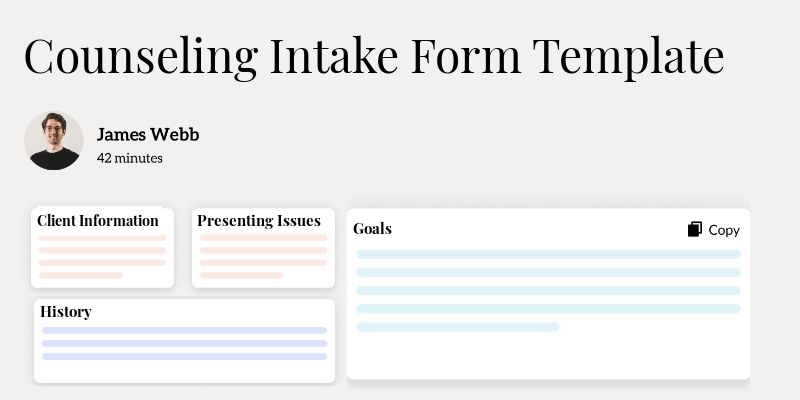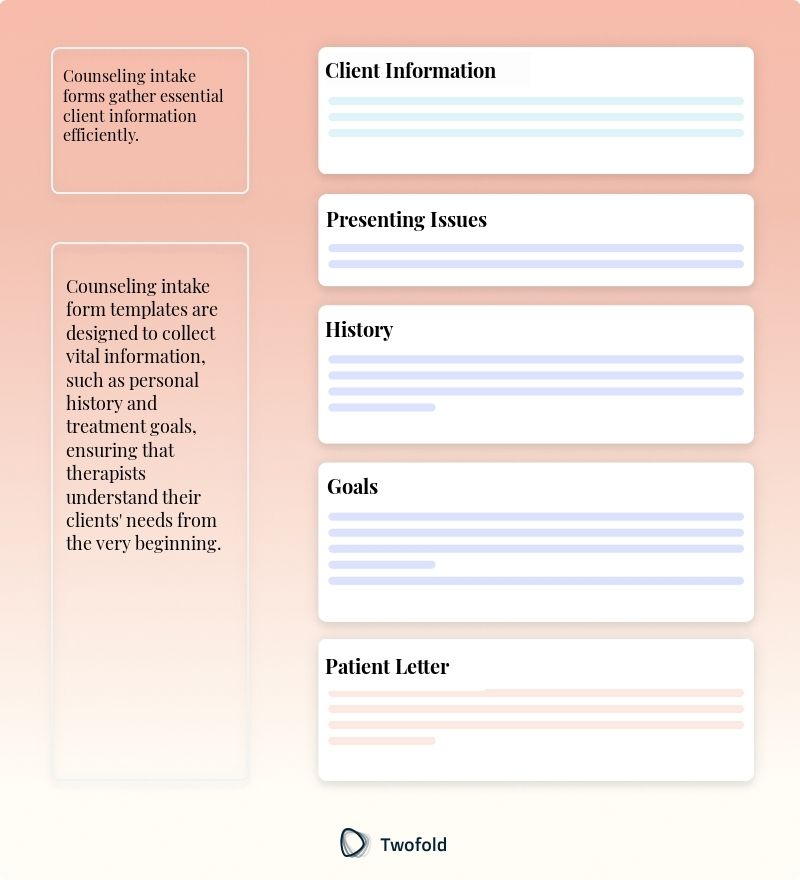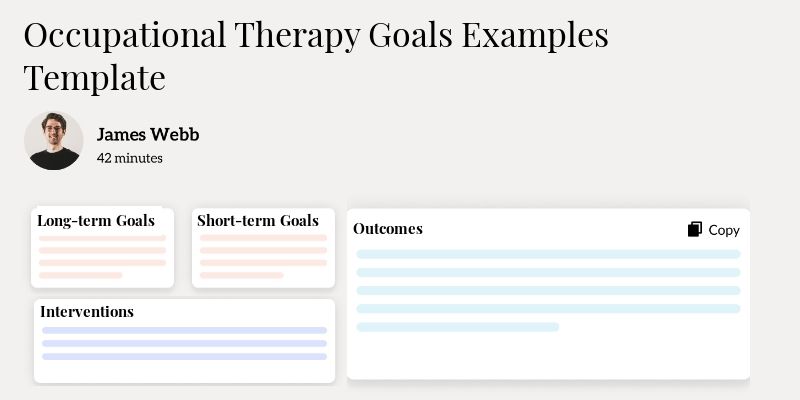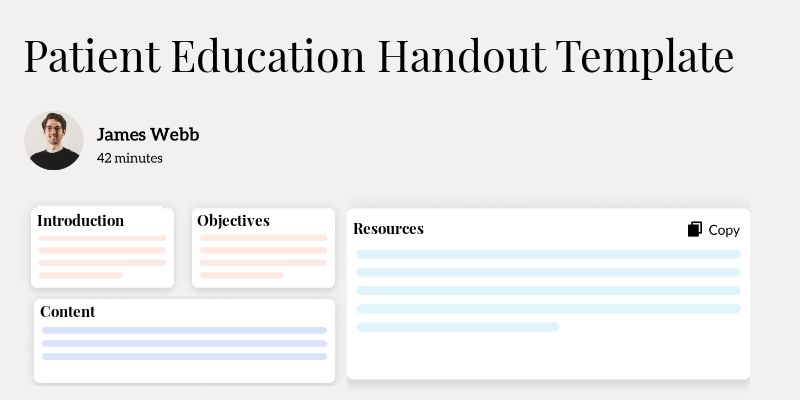
Counseling Intake Form Template
Are you struggling with the initial paperwork in counseling sessions? You're not alone. Many professionals find the counseling intake process cumbersome, yet it's crucial for setting the treatment direction. Let's make it easier by exploring the Counseling Intake Form Template, a tool that can streamline your practice.
What Is a Counseling Intake Form Template?
A Counseling Intake Form Template is a structured document that helps gather essential information about new clients entering therapy or counseling sessions. It serves as a foundational tool to understand a client's needs, history, and treatment goals.
The template is designed to standardize initial client assessments, ensuring that no critical information is overlooked during the first interaction. This form typically includes personal data, medical history, current concerns, and expectations from therapy.
Key Components of a Counseling Intake Form
This template includes several vital sections that capture comprehensive client information:
- Personal Information: Full name, contact details, date of birth, etc.
- Emergency Contact: Details of someone to reach out to in case of emergencies.
- Health History: Previous physical and mental health conditions.
- Current Concerns: Description of symptoms or reasons for seeking counseling.
- Goals for Therapy: What the client hopes to achieve through counseling sessions.
- Consent for Treatment: Legal consent by the client to begin therapy.

How to Use a Counseling Intake Form Template: Step-by-Step Process
Step 1: Personal Details Collection
Start by having the client fill out personal information and emergency contact details. This sets the groundwork for further data gathering.
Step 2: Health and Medical History
Ask the client to provide any relevant past or current health conditions, medications, or therapies in the designated section.
Step 3: Presenting Concerns and Goals
Guide the client through articulating their current issues and what they aim to resolve through therapy. This step is crucial for treatment planning.
Step 4: Review Consent for Treatment
Ensure that the client reads and understands the consent segment before signing. Confirm all details to proceed with confidence.
Step 5: Conduct a Follow-Up
Set up a follow‑up discussion to clarify points from the intake form and begin therapeutic intervention.
Benefits of a Counseling Intake Form
Benefit | Description |
|---|---|
Improved Client Insights | Provides a comprehensive view of the client's background and current situation. |
Streamlined Workflow | Facilitates a more organized and efficient counseling session. |
Consistency in Documentation | Ensures that all essential fields are completed thoroughly across all clients. |
Legal Compliance | Helps maintain mandatory consent and privacy standards as per regulations. |
Stakeholders in the Counseling Intake Form
Various individuals play a role in the creation and utilization of counseling intake forms:
- Counselors: Create treatment plans based on intake insights. Example: A therapist adjusting their approach after learning a client has previous trauma.
- Clients: Provide the necessary information for a personalized therapeutic experience. Example: A client feels more comfortable and understood after clearly stating their goals.
- Administrative Staff: Handle and ensure forms are properly completed and filed. Example: Admin confirming that all necessary consents are signed before sessions.
- Supervisors or Clinic Managers: Ensure that standards are met and guidelines followed. Example: A clinic manager audits forms to confirm they meet ethical standards.
Example of a Counseling Intake Form PDF
The PDF version of the counseling intake form provides a formatted guide for applying the template efficiently.
Real-World Use Cases: Practical Impact of the Counseling Intake Form Template
The impact of a well‑crafted counseling intake form can be observed in diverse scenarios:
- Anxiety-Ridden Clients: Amy felt anxious about therapy. Completing the intake form reassured her about the support she would receive.
- Complex Medical Histories: John has multiple health issues. Detailing these in the form enabled an integrated care plan with his therapist and doctor.
- Client Progress Tracking: Linda's therapist noticed improvement by comparing intake notes with current session data, helping refine therapy strategies.
Conclusion
The Counseling Intake Form Template stands as a fundamental asset in counseling settings. It ensures that vital client information is gathered systematically, facilitating informed therapeutic interventions. As stakeholders collaborate, the intake form bridges the gap between administrative efficiency and personalized care, leading to successful therapeutic outcomes.
Disclaimer: This article is for informational purposes only and does not constitute legal or medical advice. Always consult professional guidelines and regulatory bodies for specific compliance requirements.

Dr. Danni Steimberg
Dr. Danni Steimberg is a pediatrician at Schneider Children’s Medical Center with extensive experience in patient care, medical education, and healthcare innovation. He earned his MD from Semmelweis University and has worked at Kaplan Medical Center and Sheba Medical Center.
A counseling intake form sets the stage for therapeutic alliance and accurate treatment planning. The CLARITY steps—Chief concern, Life context, Associated symptoms, Resources & supports, Impact on functioning, Treatment goals, Yellow‑flag risks—keep questions purposeful and documentation reimbursement‑ready.
- Thread the Narrative: Start with the client’s own words about their chief concern, then layer in life context (family, culture, stressors) to avoid canned assessments.
- Quantify Impact & Goals: Pair symptom ratings (e.g., anxiety 8/10) with concrete treatment goals (“reduce to 4/10 in 8 weeks”)—this symmetry proves medical necessity to insurers.
- Flag Risks Early: Close with yellow-flag queries on safety, substance use, or legal issues; a built-in risk snapshot guides immediate planning and satisfies audit checkpoints.
Frequently Asked Questions
Reduce burnout,
improve patient care.
Join thousands of clinicians already using AI to become more efficient.

Mental Health Group Note Template
Discover practical Mental Health Group Note templates to enhance your documentation efficiency.

Occupational Therapy Goals Examples Template
Discover practical Occupational Therapy Goals Examples Template templates to enhance your documentation efficiency.

Patient Education Handout Template
Discover practical Patient Education Handout Template templates to enhance your documentation efficiency.

